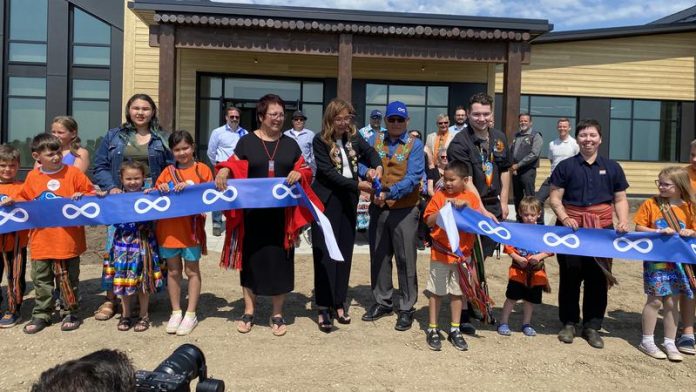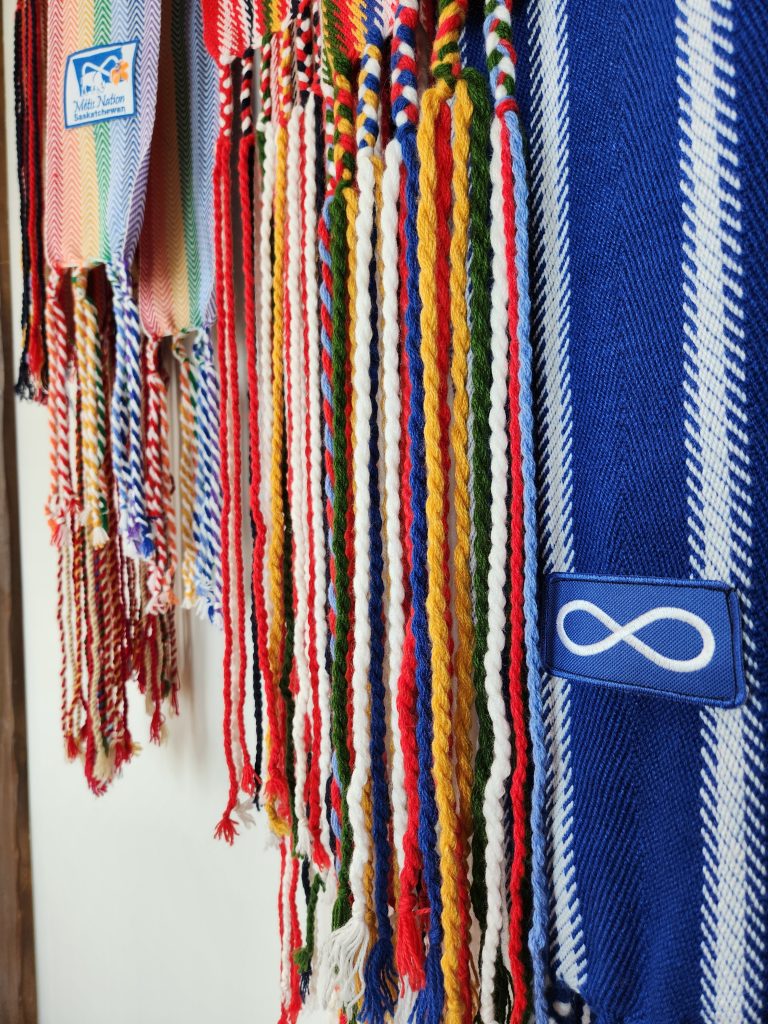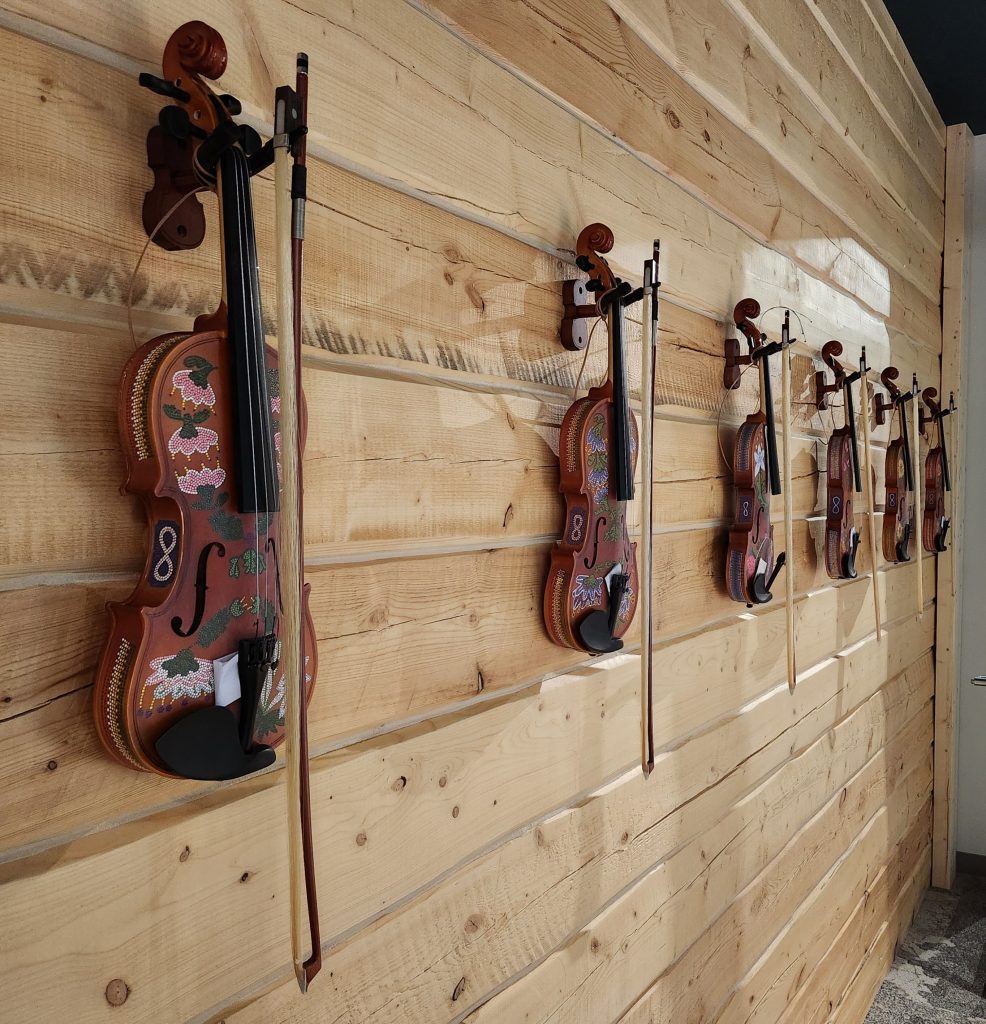
Glenda Goertzen
Prince Albert Daily Herald
BATOCHE – Seven months after the reintroduction of Plains bison to Batoche, the traditional lands hosted the fulfillment of another vision—a province-wide home for Métis education, culture and history.
On Wednesday, more than 50 people gathered at the Festival Grounds of Batoche, located on the South Saskatchewan River an hour north of Saskatoon. The Batoche National Historic Site commemorates the historic Métis community of Batoche, Métis river lot land use patterns and the decisive battle of the North-West Resistance. Here, in May of 1885, 300 Métis and First Nations people led by Louis Riel and Gabriel Dumont fought a force of 800 troops commanded by Canada’s Major-General Middleton. Nearly 140 years later, descendants of those who fought in the resistance celebrated the opening of the Dumont Lodge at Batoche.
The Lodge is the result of a partnership between Métis Nation–Saskatchewan (MN–S) ministries of Infrastructure and Housing, Early Learning and Child Care, and Culture and Heritage, together with Urban Programming for Indigenous Peoples (UPIP). They constructed the $8 million, 18,000-square-foot building to be a space for youth to learn traditional skills from Elders and cultural leaders. For many, it means even more.
“It’s our first real home that we’ve built as a Métis nation,” said Michelle LeClair, MN–S Vice President and Minister of Environment, during the opening ceremony.
The prayer to open the gathering was led by her father Elder Albert LeClair, whose vision for the Lodge in 2022 led to its reality only two years later.
“A lot of this started as we do as Métis people. We visit. We have coffee, we have tea. We sit around and we talk,” said LeClair. “One day, early in my tenure as vice president, my dad was saying, ‘We need to find a way to reintroduce our kids into native culture. They’re getting lost, they’re reaching out, and they need to know their language. They need to learn about skinning a rabbit, about the importance of the buffalo hunt, about the history of this place.”
She went on to mention that her great-great-uncle Michel Trottier had died at the Battle of Batoche. “He was one of the last men to fall on the battlefield and is buried here at Batoche. Those kind of historic pieces we can’t lose. Our kids need to learn, and they’re wanting to learn.”

A display of Métis sashes.
Cpening ceremony MC Jason McKay, “The Wandering Métis”, also shared a family connection to Batoche. His great-great-grandfather Damase Carrière fought and died at the resistance. “He gave his life for our people. He had a noose put around his neck, and he was drug by a horse and died.” According to historical reports, the English troops had mistaken Damase Carrière for the resistance leader Louis Riel.
The Riel Scouts is the first program to operate at the Lodge. It involves Elders teaching young Métis citizens, from five-year-old “gophers” up to 18-year-old “bisons”. The goal is to instill pride in Métis youth, who will go on to become mentors and counsellors to the younger Riel Scouts. Beyond nurturing individual growth, health and wellness, ministers of the MN–S government expressed a belief that a program immersing children in core Métis values will contribute to the retention of Métis culture and the Michif language.
“What this building is going to do one day is make it so that there are Métis children who know who they are, who are proud to say that they’re Métis,” said Autumn Laing-La Rose, President of the Provincial Métis Youth Council and Minister for Youth for MN–S. “They’re proud to know their language, they’re proud to know their culture and they’re proud to share these.”
Saskatoon-based 3twenty Modular designed and built the Lodge using a hybrid site-built and modular construction approach.
“It’s not often that you see 17 mods or 18,000 square feet of building being shifted down highways in Saskatchewan,” observed Sarah Hortness, 3twenty Modular’s Design Director, adding an apology for drivers caught behind the transport of the modular buildings.
She said that led by the vision of MN–S member Jason Surkan, owner of Situated On Land Office (SOLO) Architecture, the team ensured Métis culture was represented throughout the building. The influence of traditional Métis craftsmanship can be seen in the framing techniques, the chevron floor tile pattern and the half-dovetail log wall. The décor features custom designed Métis shapes, as featured around the centerpiece fireplace.

Fiddle collection in the ceremonial room
“Every inch of Dumont Lodge speaks of Métis identity, culture, values and language to me,” said MN–S President Glen McCallum. “This building represents where we as Métis people have come from, and the involvement of our youth is proof that we are heading in the right direction. With the guidance of our Elders, our Nation and our Métis culture are in good hands.”
The building is divided into a gathering space, lodging for scouts and the Elders’ lodging wing. The landscaping will include a medicine wheel garden and trails through the forest that are home to plants and berries traditionally harvested by Métis.
“The location of Dumont Lodge was carefully selected for its connection to the land–nestled in the forest and rolling hills of Batoche,” said Michelle LeClair. “The tranquility of this region is far removed from the storied history, but teachings will be passed to our youth in the perfect environment. The building and location along with the multi-use capabilities of the Lodge will allow the MN–S to showcase our culture to governments, industry and those wishing to host corporate events.”
The Lodge is named for Gabriel Dumont, best known for his role in the North-West Resistance as an ally of Louis Riel and a skilled military commander. A prominent hunt chief and warrior, he worked for decades to improve the economic prosperity and political independence of the Métis. He is buried at Saint Antoine de Padoue Roman Catholic Cemetery at Batoche.
Ministers, builders and guests expressed delight that the construction was completed just in time for the Back to Batoche Days festival July 18th to the 21st. An estimated 50,000 people from all over North America are expected to attend. The Dumont Lodge will be open for tours throughout the festival.

